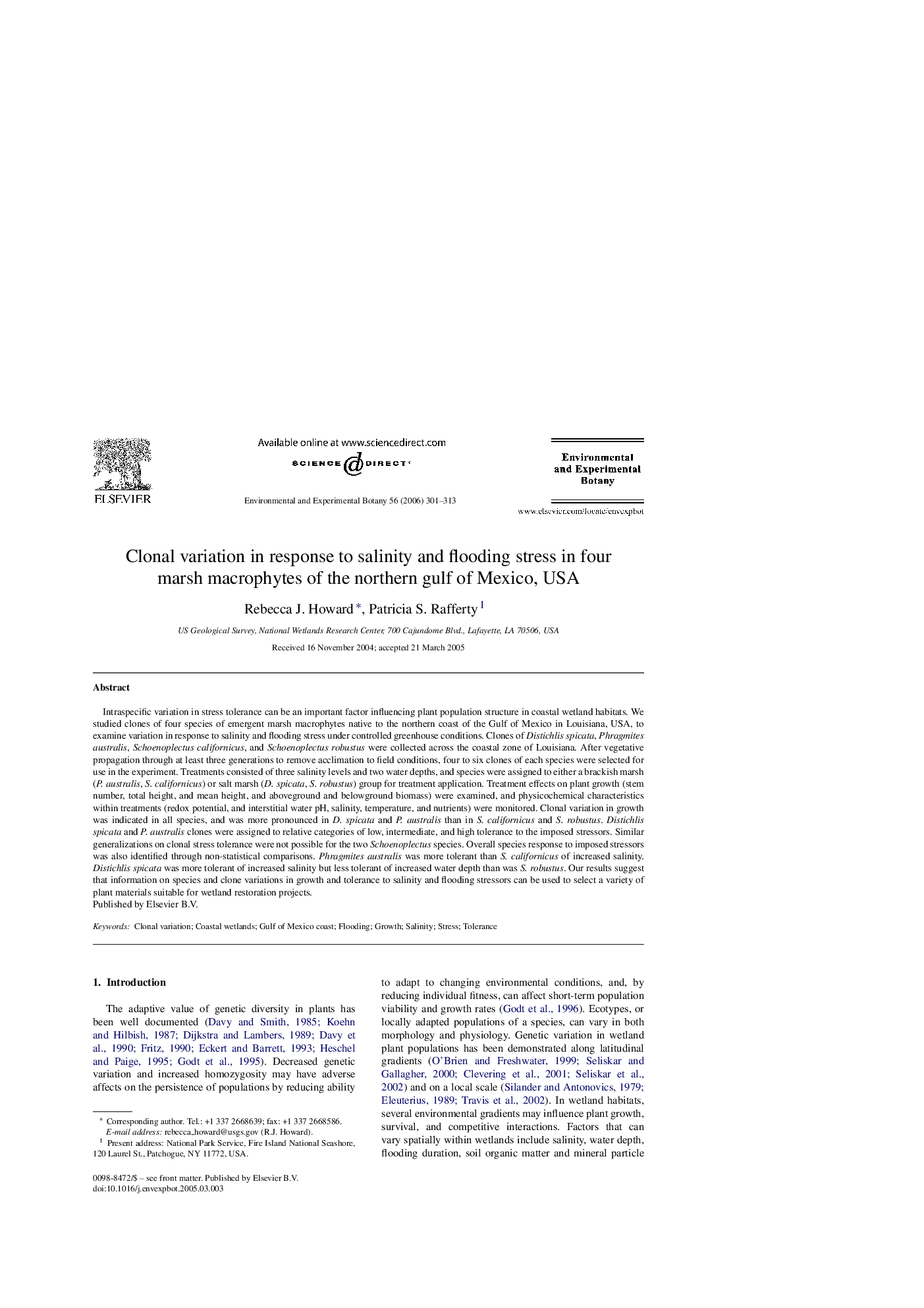| Article ID | Journal | Published Year | Pages | File Type |
|---|---|---|---|---|
| 4555597 | Environmental and Experimental Botany | 2006 | 13 Pages |
Intraspecific variation in stress tolerance can be an important factor influencing plant population structure in coastal wetland habitats. We studied clones of four species of emergent marsh macrophytes native to the northern coast of the Gulf of Mexico in Louisiana, USA, to examine variation in response to salinity and flooding stress under controlled greenhouse conditions. Clones of Distichlis spicata, Phragmites australis, Schoenoplectus californicus, and Schoenoplectus robustus were collected across the coastal zone of Louisiana. After vegetative propagation through at least three generations to remove acclimation to field conditions, four to six clones of each species were selected for use in the experiment. Treatments consisted of three salinity levels and two water depths, and species were assigned to either a brackish marsh (P. australis, S. californicus) or salt marsh (D. spicata, S. robustus) group for treatment application. Treatment effects on plant growth (stem number, total height, and mean height, and aboveground and belowground biomass) were examined, and physicochemical characteristics within treatments (redox potential, and interstitial water pH, salinity, temperature, and nutrients) were monitored. Clonal variation in growth was indicated in all species, and was more pronounced in D. spicata and P. australis than in S. californicus and S. robustus. Distichlis spicata and P. australis clones were assigned to relative categories of low, intermediate, and high tolerance to the imposed stressors. Similar generalizations on clonal stress tolerance were not possible for the two Schoenoplectus species. Overall species response to imposed stressors was also identified through non-statistical comparisons. Phragmites australis was more tolerant than S. californicus of increased salinity. Distichlis spicata was more tolerant of increased salinity but less tolerant of increased water depth than was S. robustus. Our results suggest that information on species and clone variations in growth and tolerance to salinity and flooding stressors can be used to select a variety of plant materials suitable for wetland restoration projects.
